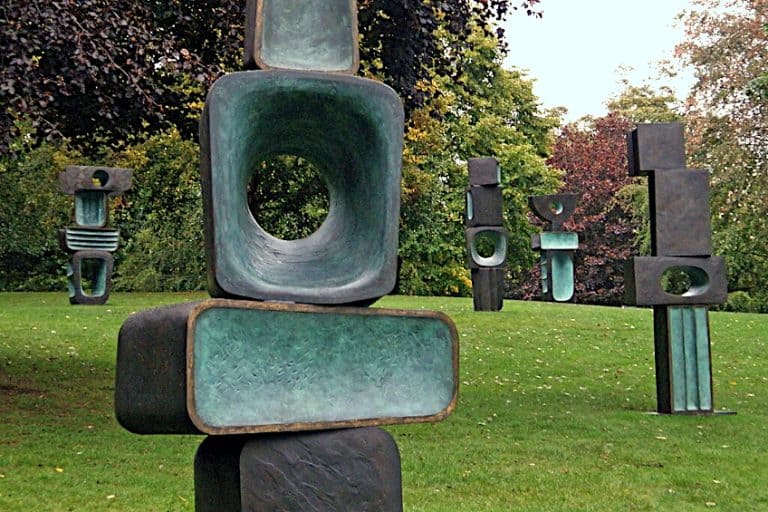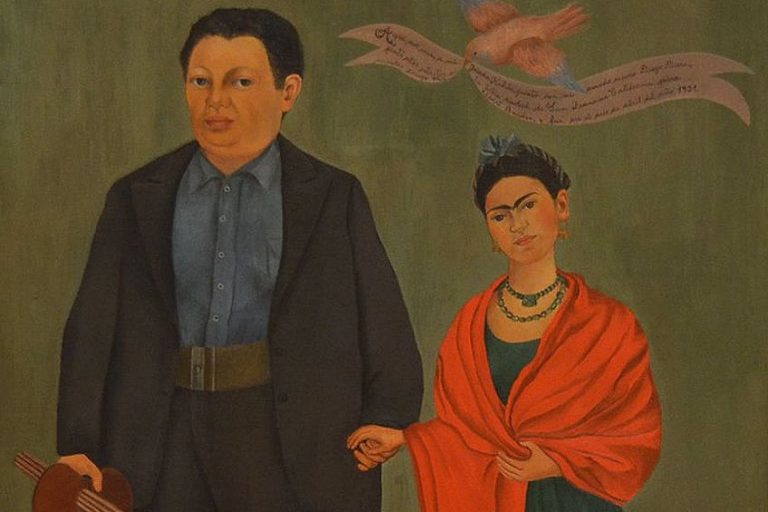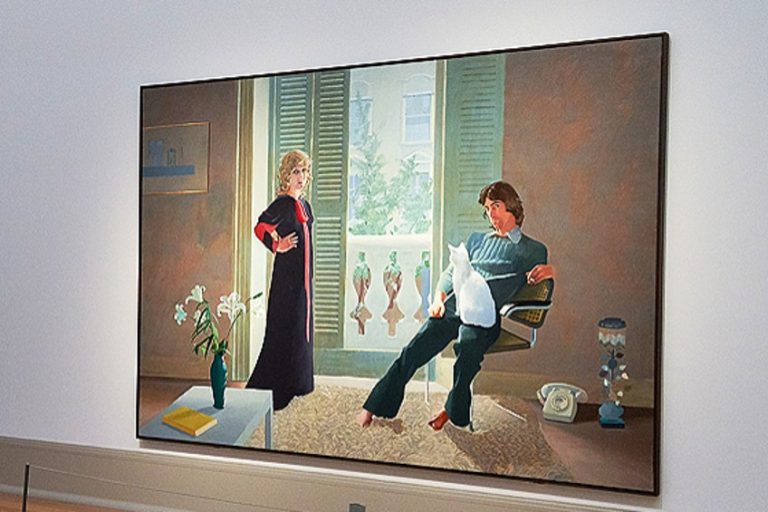Frank Bowling – Merging the Personal and Abstract
Frank Bowling is a pioneering figure in contemporary art, known for his innovative approaches to color and form. Born in 1934 in British Guiana (now Guyana), Bowling moved to England in the 1950s, where he became a prominent member of the London art scene. His work spans a wide range of styles and techniques, from abstract expressionism to post-painterly abstraction, reflecting his diverse influences and experiences. Throughout his career, Bowling has challenged traditional notions of painting, exploring themes of identity, history, and the nature of art itself. Bowling’s daring utilization of color and texture continues to captivate global audiences, positioning him as a notable figure within the realm of modern art.
Key Takeaways
- Frank Bowling’s abstract paintings merge personal and geographical narratives.
- Bowling’s work serves as a bridge between London and New York art scenes.
- His accolades include prestigious memberships and royal honors.
Early Life and Education
| Birth | February 26, 1934 |
| Death | Present |
| Place of Birth | Bartica, British Guiana, South America |
| Genre of Work | Abstract Expressionism, Color Field painting, and Lyrical Abstraction |
Frank Bowling is a distinguished artist whose career spans over six decades, marking him as one of the most influential painters in the contemporary art scene. Born in 1934, Bowling’s extensive body of work has developed through various phases, often characterized by his abstract style that weaves together personal memories with cultural geography. He has lived and worked between two major art capitals of the world, London and New York, honing his craft and contributing significantly to the landscape of abstract expressionism.

Having studied at the Royal College of Art in London, Bowling’s exploration in the realm of painting has seen the successful fusion of abstract expressionism with elements of color field painting, particularly noticeable in his acclaimed Map Paintings. Throughout his career, Bowling has been recognized for his innovative use of materials and techniques, deliberately choosing to evolve his methods to reflect his ongoing engagement with the medium of paint.
His artistic expression stands out for its thematic depth, often delving into issues of identity, displacement, and the history encapsulated within the medium.
British Guiana and Royal Air Force
Born in Bartica, British Guiana, on February 26, 1934, Frank was the eldest son in a family that moved to New Amsterdam in 1940. His early life in the rich, diverse landscapes of British Guiana shaped his perceptual palette. In his later teenage years, Frank served in the Royal Air Force, an experience that marked a transition from his life in the Caribbean to his future endeavors in London.

Royal College of Art and Early Influences
After moving to London, Frank Bowling was admitted to the Royal College of Art, from which he graduated with a silver medal in painting in 1962. At the Royal College, he studied alongside notable contemporaries such as David Hockney, Derek Boshier, and R.B. Kitaj, finding his place in a vibrant scene of emerging British artists. His encounters with the works of Francis Bacon, among others, effected a robust stimulus, driving him towards abstract expressionism.
The education and camaraderie found in this institution significantly molded Bowling’s early artistic trajectory.
Artistic Evolution and Techniques
Frank Bowling’s artistic evolution is marked by a steadfast progression towards abstraction and a distinguished use of diverse materials. His techniques are innovative and expansive, contributing significantly to the discourse of contemporary painting.

Transition to Abstraction
Initially, Frank Bowling pursued painting in a figurative manner, but he soon embarked on a journey towards abstraction. This shift was catalyzed by his interest in the fundamental properties of painting and a desire to explore beyond representational imagery.
His abstract work eschews literal depictions, instead forging a new visual language that speaks through color and form.
Experimentation With Materials
Bowling’s exploration of materials is central to his originality. He incorporates a range of substances into his work, from traditional paints to more unconventional elements like gel and chalk. Poured paint is a notable technique he employs, allowing gravity to influence the spread and blend of colors on his canvases. This method adds a dynamic and spontaneous layer to his artistic process and results.

The Map Paintings Series
The Map Paintings series signifies a hallmark in Bowling’s oeuvre, displaying his mastery of scale and technique. Created during the late 1960s and early 1970s, these large-scale canvases are renowned for their abstract visualization of geographical maps.
They are characterized not only by their grandeur but also by their layered textures and vibrant use of color, demonstrating Bowling’s unique approach to abstract painting.
Themes and Cultural Significance
In his art, Frank Bowling navigates vital cultural narratives, including themes of black cultural identity and the influences of colonialism, all while contributing to the movements of Abstract Expressionism and Color Field painting. His works are a testament to the complex interplay between personal experience and abstract artistic expression.

Black Cultural Identity
Bowling’s paintings often reflect black cultural identity, offering insights into the experiences and histories of black individuals. As a black artist, Bowling weaves his cultural narrative into his artwork, creating pieces that communicate a deep sense of identity and belonging.
His use of vibrant colors and layered textures can be seen as an exploration of his African-Caribbean heritage, and in some instances, his art has served as a celebration of black artists and their contributions to art history.
Influence of Colonialism
The theme of colonialism is palpable in Bowling’s body of work. Born in British Guiana, a former colony, his experiences under colonial rule have informed his artistry. Art history reflects Bowling’s understanding of the Americas and Europe, specifically the way colonialism has shaped cultural and societal norms. His art not only addresses the impact of colonialism on the countries directly affected but also delves into its ongoing influence on diasporic identities across the world.

Abstract Expressionism and Color Field
A significant contributor to abstract expressionism and color field painting, Bowling’s work is characterized by its bold employment of color and abstract forms. These styles allowed him to express thought and emotion through paint, separate from the constraints of figurative representation. In doing so, he established himself not only as an artist of the Americas but also made his mark in Europe, particularly in the UK art scene.
His approach to painting redefines traditional boundaries, creating a dynamic intersection where personal history and cultural commentary meet the liberating potential of abstraction.
Legacy and Recognition
Frank Bowling’s work has solidified his position in the modern art world with an extensive presence in major institutions and a collection of honours celebrating his contributions to art.

Major Exhibitions and Collections
Bowling’s paintings are held in significant collections worldwide, signifying his impact on contemporary art. His large-scale, abstract Map paintings and other works are featured prominently in the Tate Britain, which underscores his influence in the UK. Across the pond, institutions like the Whitney Museum of American Art in New York have also acknowledged his work, marking his international relevance.
Other notable collections displaying Bowling’s art include the National Gallery, SF MOMA, and the Serpentine Gallery, among others.
Accolades and Honorary Titles
The artistic achievements of Frank Bowling have been recognized with several prestigious honours. He has been appointed as Officer of the Order of the British Empire (OBE) and is a Royal Academician (RA), affiliating him with the Royal Academy of Arts. These accolades are testament to his artistic skill and the respect he commands in the art world.

Frank Bowling Today
At an advanced age, Frank Bowling continues to contribute to the art world. His commitment to his craft is evident through his ongoing creation of art, despite health challenges and doctor’s orders limiting his daily practice. Bowling’s studio remains a vital center for his artistic output and the maintenance of his legacy, promoting innovative projects and housing an extensive archive on his life and works.
Frank Bowling’s artistic journey is a testament to his relentless experimentation and boundary-pushing creativity. His contributions to the art world extend far beyond his iconic paintings, influencing generations of artists and reshaping the dialogue around contemporary art. Bowling’s fearless exploration of color, form, and technique has left an indelible mark on the art landscape, solidifying his legacy as a visionary artist. As we continue to unravel the layers of his work, Bowling’s impact remains ever-present, inspiring us to rethink the possibilities of art and its capacity to evoke emotion, provoke thought, and ignite change.
Frequently Asked Questions
What Type of Art Is Frank Bowling Renowned For?
Frank Bowling is recognized for his pioneering work in abstract painting. His six-decade-long career is marked by continuous experimentation with paint, extending the language of abstraction with his innovative approaches.
What Contributions Has Sir Frank Bowling Made to the Art World?
Sir Frank Bowling has significantly contributed to the art world by challenging the boundaries of abstract expressionism. His work is characterized by vibrant color use, layering, and texture, which have influenced a generation of painters and redefined modern abstract art.
What Is the History of Frank Bowling’s Move to New York?
In 1966, Frank Bowling moved from London to New York City, a period marked by vibrant art scenes and debates on Black identity in the arts. His relocation was motivated by a desire to engage with the discourse on modern painting and to establish himself within an art scene that was in flux.
Isabella studied at the University of Cape Town in South Africa and graduated with a Bachelor of Arts majoring in English Literature & Language and Psychology. Throughout her undergraduate years, she took Art History as an additional subject and absolutely loved it. Building on from her art history knowledge that began in high school, art has always been a particular area of fascination for her. From learning about artworks previously unknown to her, or sharpening her existing understanding of specific works, the ability to continue learning within this interesting sphere excites her greatly.
Her focal points of interest in art history encompass profiling specific artists and art movements, as it is these areas where she is able to really dig deep into the rich narrative of the art world. Additionally, she particularly enjoys exploring the different artistic styles of the 20th century, as well as the important impact that female artists have had on the development of art history.
Learn more about Isabella Meyer and the Art in Context Team.
Cite this Article
Isabella, Meyer, “Frank Bowling – Merging the Personal and Abstract.” Art in Context. May 10, 2024. URL: https://artincontext.org/frank-bowling/
Meyer, I. (2024, 10 May). Frank Bowling – Merging the Personal and Abstract. Art in Context. https://artincontext.org/frank-bowling/
Meyer, Isabella. “Frank Bowling – Merging the Personal and Abstract.” Art in Context, May 10, 2024. https://artincontext.org/frank-bowling/.











